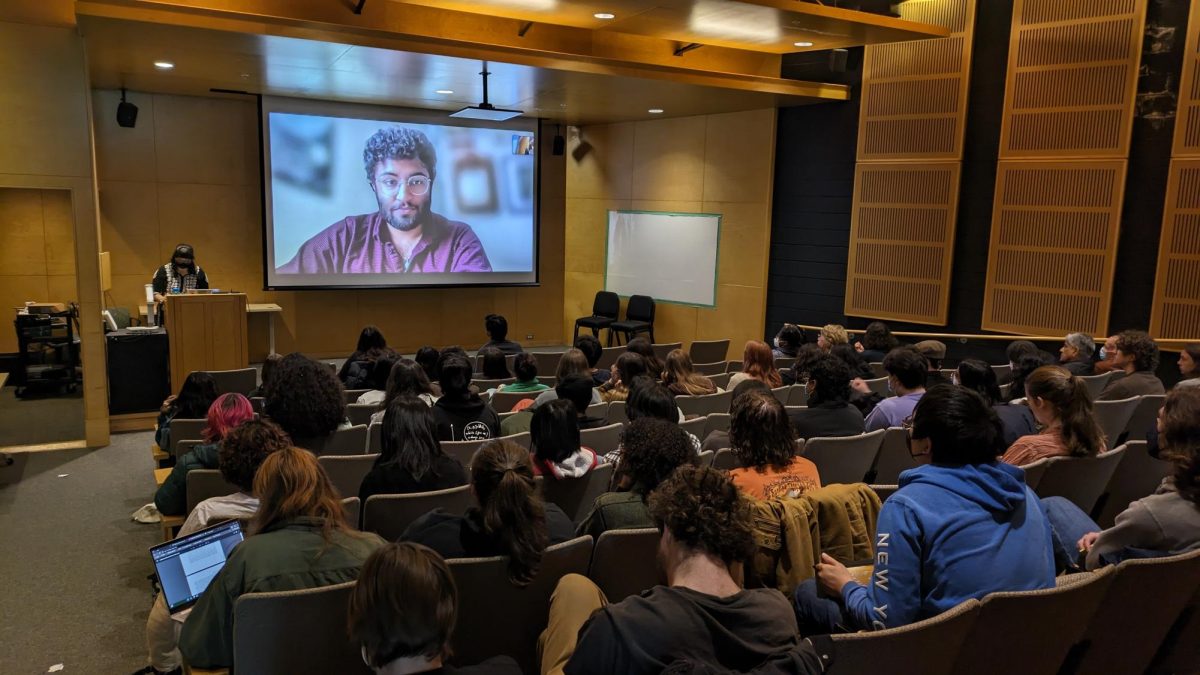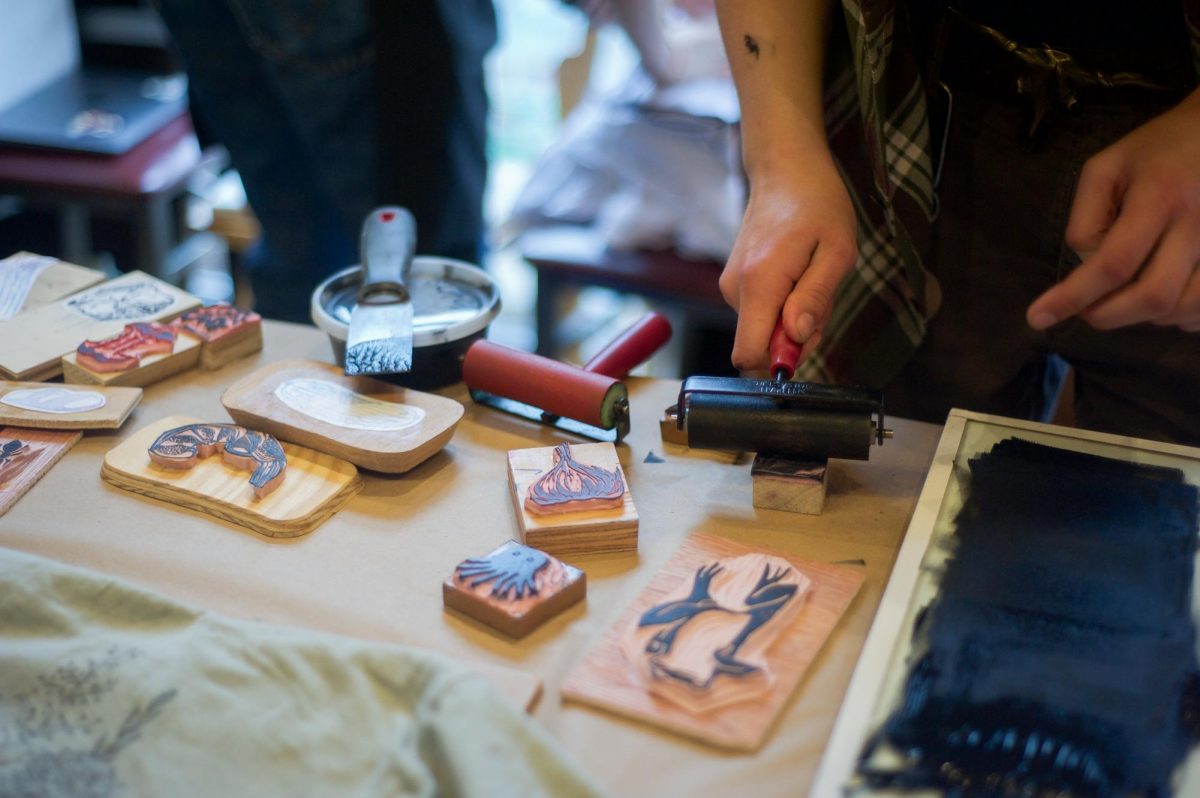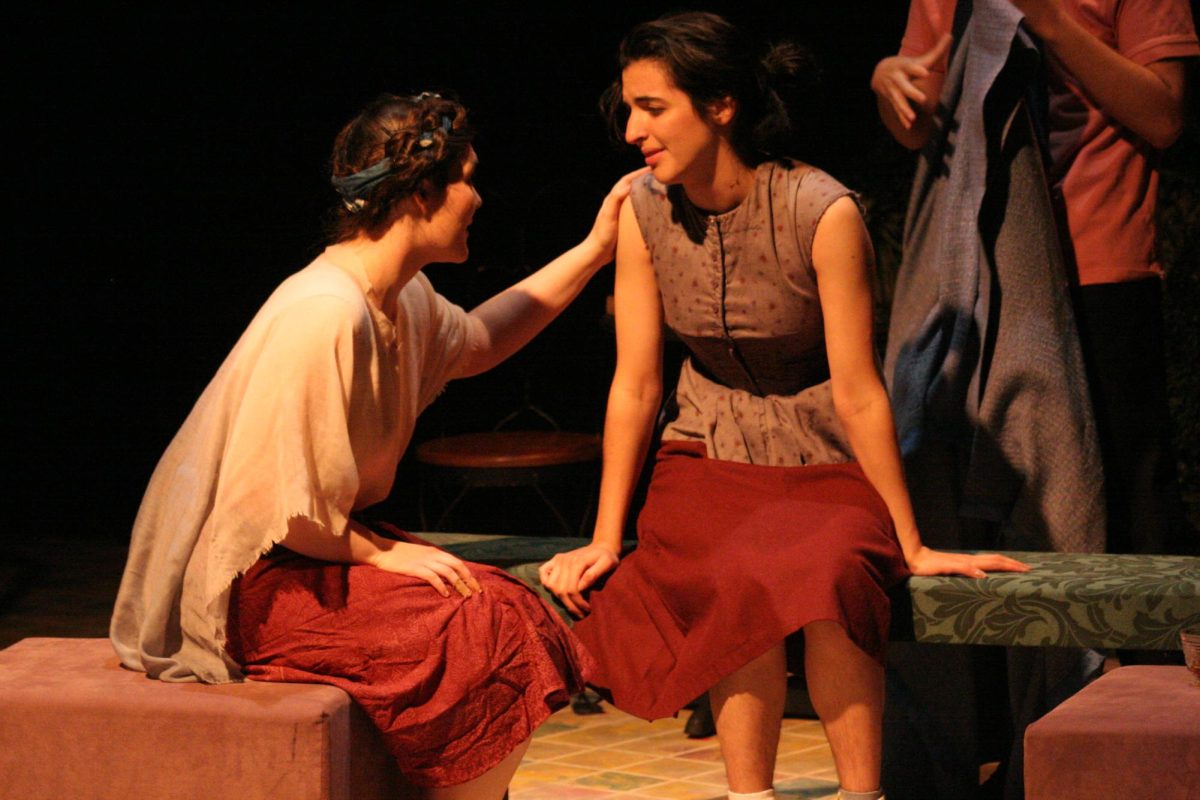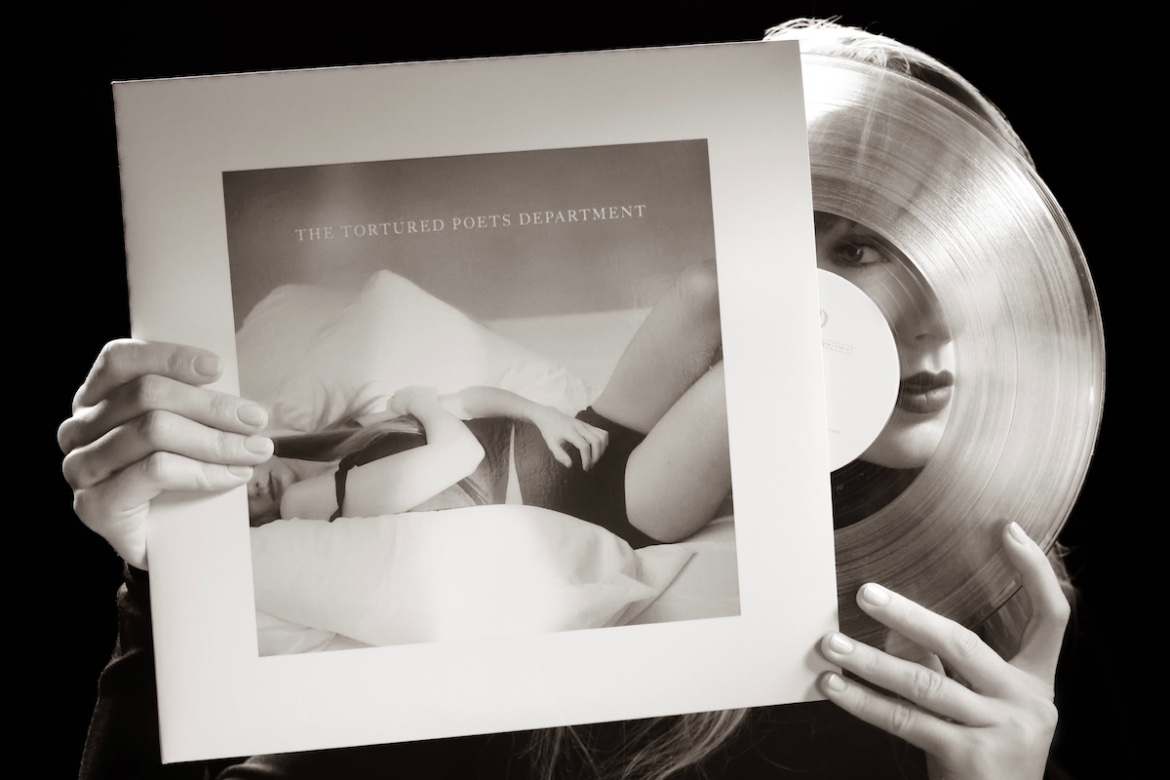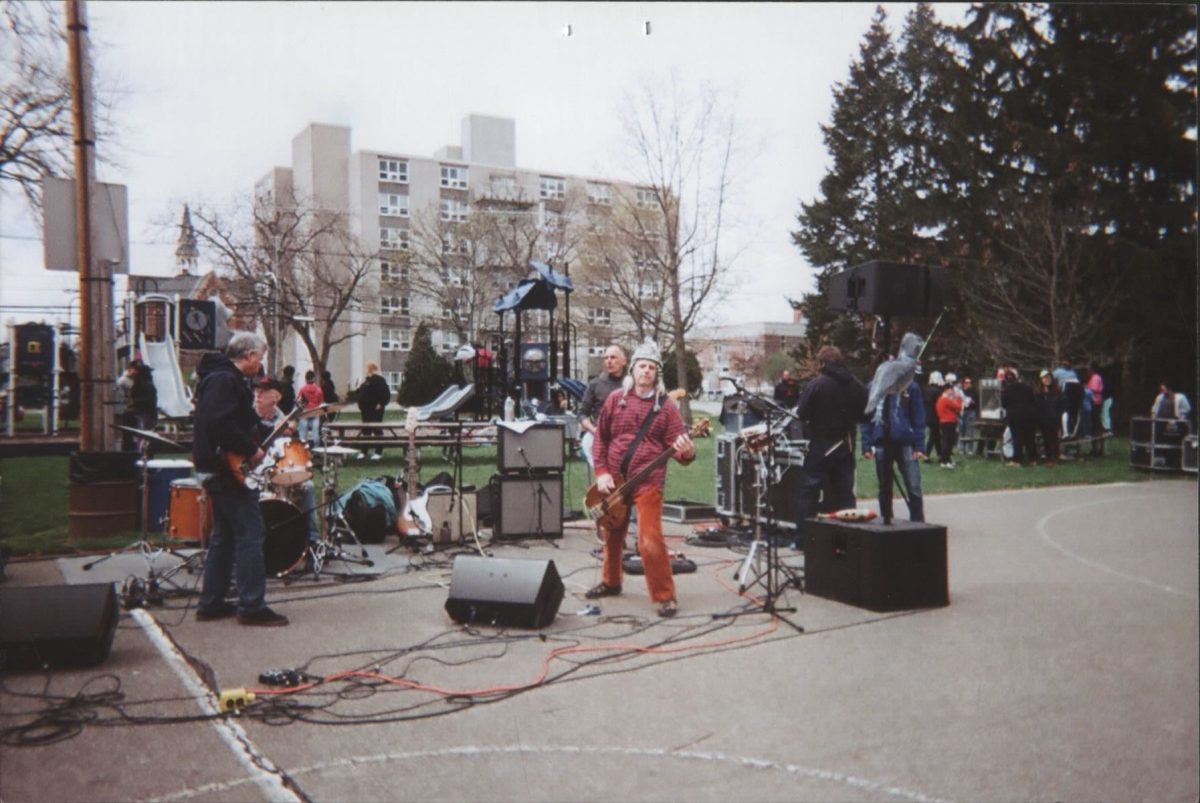On The Record with TIMARA Professor Peter Swendsen

Photo courtesy of Peter Swendsen
Associate Professor of Computer Music and Digital Arts and TIMARA Chair Peter Swendsen, OC ’99, recently premiered collaborative fixed-media piece What Noises Remain with percussionist Jennifer Torrence, OC ’09.
February 3, 2017
Associate Professor of Computer Music and Digital Arts Peter Swendsen, OC ’99, spent Winter Term in Norway performing his new hour-long, fixed-media piece What Noises Remain with percussionist Jennifer Torrence, OC ’09. Swendsen, who also holds an M.F.A. from Mills College Center for Contemporary Music in California and a Ph.D. in Music Composition and Computer Technologies from the University of Virginia, has written extensively for dance and film and often works collaboratively with other artists. Some of his recent and ongoing projects include pieces in collaboration with David Shimotakahara, director of the Cleveland-based GroundWorks Dance Theater and Dana Jessen, director of Professional Development for the Conservatory. He has composed with musicians and performers around the world and draws much of his inspiration from the natural world and its intersection with human and technological realms.
This interview has been edited for length and clarity.
You spent Winter Term in Norway for the European premiere of your piece What Noises Remain in collaboration with Jennifer Torrence. How was that?
It was special for a few reasons. My wife and I lived in Norway for a year 10 years ago. I had a Fulbright fellowship, … so it’s a place that’s very meaningful that I feel connected to in a lot of ways, and it’s a place where this project that we performed has its origins. Jen [Torrence] and I spent some time together in this northern city [of Bodø] four years ago [during Winter Term], and that’s where we hatched the idea for this project, so even though we had done the premiere here in September, doing the shows in Norway felt very much like bringing the piece home to where it had started. It’s also a very special place to be in the winter. It’s dark, especially up north, but very beautiful, and yet the people are still out and about and doing things, and there’s a sense of activity but also coziness. It’s a very seasonally specific sensation you get when you’re there in Norway in the winter.
What did the September premiere in Oberlin entail?
We premiered it here in Warner Main Space in the dance building at the end of September. It’s an hour-long piece, so it’s a pretty big undertaking, especially for Jen, who’s the solo performer. She’s on stage the whole time. It’s a piece for percussion and electroacoustic sound and video. The percussion is sometimes performed like percussion — sometimes she hits the drum and the drum makes sound. Much of the time she’s on stage she’s doing movement that is somewhat more theatrical in nature — she’s using the drum as a prop, as part of the scenery. The drum surface becomes a kind of metaphor for the water, for the island. The piece is set very abstractly on an island, so the surface of the drum kind of takes on all these meanings. There are a lot of other objects that get put on the drum, … and they get scattered around the stage, [like] sticks and debris and paper and lots of things that aren’t really percussion instruments, so to speak. So we’d say it’s for percussion, and yet really the “percussion” part is relatively short in comparison to the whole piece.
How did your collaboration with Torrence come about?
Jen and I started working together when I first came to Oberlin, which was 10 years ago now. She was a junior at Oberlin at the time, and we made a piece together — she was part of the contemporary music ensemble at the Conservatory, and I wrote a piece for a five-member subset of that ensemble my first year here, and she was part of that piece. And then we made another piece together for her senior recital, … and both of those pieces are on a CD of mine that came out under the Oberlin music label two years ago, that are all works based on my time in Norway, actually. So we had done these projects together when she was here as a student, and then she went off into the world and started doing more amazing things in Europe and in the U.S., and then we had this time set aside four years ago now, where we both knew we had some time coming up that we wanted to [use to] work on new projects, and we decided to just get together for a week and brainstorm what we might do together. This was one of … five or six ideas that we talked about, and it’s the one that took root.
You’ve described this kind of piece as “fixed media.” Can you elaborate more on what that means?
The performance has a lot of layers happening at any given moment. There’s a fixed, pre-composed music and sound layer that is the same every time, and that’s comprised mostly of field recordings from various natural settings and then sometimes processed and layered versions of that. Sometimes those things combine with other recordings of Jen playing various things in the percussion world, and also sometimes some text in English and Norwegian, sometimes sung. It’s a pretty richly layered sound world, and then on top of that she does these live sound events with the instruments on stage. … There are also two … circular projections in the space. They are also fixed, and at the same time they are also richly layered, so it’s a lot of images of the kinds of landscapes that we’re attempting to present in the piece, but also figures in those landscapes [including Torrence and dancer Amy Miller] … as well. At any given moment between the live action that’s on stage, the sound production that’s on stage, the sound that is in the speakers and the images that are projected, there is a pretty deep set of layers that represent a kind of collision of both times and places and spaces, and so I think for the audience it’s a kind of experience of weaving in and out of those layers and finding themselves somewhere in the middle.
What were some of the themes and inspirations that drew the piece together?
It originates from The Tempest. The idea is not that we’re retelling … or doing a production of The Tempest, but actually that Jen as the performer has found herself back on the island where The Tempest took place, long after the action of the play. The idea, therefore, is that she would encounter remnants of what transpired there, but never really know what had happened. So the themes of the play end up being important themes in our piece — first of all the presence of nature, and then humans in that nature and the intervention of humans in a natural setting. The piece kind of begins before there are humans there on the island, and then action takes place and by the end the humans have left again, but the place is altered nonetheless. Magic is a big theme in The Tempest, so there’s a lot of reference to that both in the kinds of movements and the sorts of materials that are happening in the piece. There’s a kind of conjuring or teasing out of sound and image. … The Tempest is fascinating — it’s Shakespeare’s last play, and it’s also one that is labeled as a comedy but has some darker themes lurking underneath. There are themes of captivity and bondage and ultimately freedom from that captivity for some people but not for others. There are some themes of intrusion and colonialism and the usurping of the local for the good of people who don’t belong originally to that place. Prospero, the main protagonist, is sometimes using the figures and the resources of the island for his own good in a way that is questionable at best. We try to tease out those things, and again we never do so literally, but there are references to that kind of stuff. There’s a time in the piece where Jen is actually tied to the drum. She has ropes and she can’t get away from [it] as the island or has the weight of where she’s held. Eventually, she’s able to release herself and at that point has a kind of freedom that she hasn’t had before that in the piece. I think if people know the play very well they could see those things, but we hope that it’s not necessary to know the play to experience the piece.
How has What Noises Remain been received?
Really well. We’ve had a lot of people talk about how it feels meditative in a way. I think [that has something to do with] the pacing of how it unfolds, even though there are some parts that I think are pretty dramatic and loud. I think there’s a trust in the materials that come from nature to have a kind of breath and a kind of shape that I think over the course of an hour ends up being sort of meditative, especially with how the piece ends. The last half of the piece is pretty introspective. We’ve had several people talk about that. It’s a piece that has enough literalities that I think audience members can find things to latch onto but is also abstract enough that you need to find your own way through it. The feedback has been nicely varied in terms of what we hear from people afterwards, not that everybody gets the same thing or points to the same moment, so that’s been nice.
It was great to do it [in Norway] because there is some text that’s in Norwegian, so when we did it here in Oberlin there probably weren’t that many people who knew what that text was. It was nice to be there with an audience who appreciated that part of it. And there are some recordings and video footage that’s from those places in Norway, so again it was nice to take it back there. It was in kind of special venues, so in Oslo we did it in … an old bank vault. The old state bank in the center of the city was donated to the city as an arts center, and one of the performance spaces is the old vault, so you walk through these huge, thick doors and into this very intimate, very cool space, so that was nice. And then up north we were in a more traditional venue, but we were there on a day that was really stormy, [like] the piece, [which is] based on this idea of the storm and the shipwreck. There was literally a fishing boat that sank not very far from where we were that day. Everybody was fine and rescued, and the boat was recovered, but it was just this incredible day to be doing the piece, because the world was doing what the piece does, so that was pretty cool. I think that also played into the reception of the piece — the environment that people were in when they were coming to see the show.





